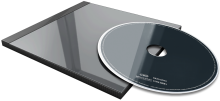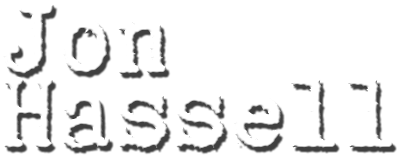Track List
01) Power Spot
02) Passage D.E.
03) Solaire
04) Miracle Steps
05) Wing Melodies
06) The Elephant and the Orchid
07) Air
01) Power Spot
02) Passage D.E.
03) Solaire
04) Miracle Steps
05) Wing Melodies
06) The Elephant and the Orchid
07) Air
7:07
5:26
6:47
4:21
7:32
11:07
5:17
Data Complete 80%
Total Rating
Total Rating
![]() (1 users)
(1 users)
Back Cover![]()
CD Art
3D Case
3D Thumb
3D Flat
3D Face
3D Spine
First Released
![]() 1986
1986
![]() Jazz
Jazz
![]() Enlightened
Enlightened
![]() International
International
![]() ---
---
![]() Medium
Medium
![]() Album
Album
![]() 0 copies
0 copies
Album Description
Available in:
Power Spot opens with the surging, polyrhythmic title track featuring Hassell's sinuous trumpet lines and dense electronic percussion from one of the album's most significant collaborators, J.A. Deane.
Ambient keyboard textures drone in the background and, together with the percussion, form a mesmerizing tapestry over which Hassell's trumpet glides and soars. Images of the African continent emerge from the cyclic rhythms and harmonic stasis; a meditative calm hovers behind the swirling surfaces.
The opening title track clearly sets the stage for what is to follow. During the murky, down-tempo "Passage D.E.," Hassell conjures stillness from his horn, breathy clouds laced with echo.
In "Solaire," the trumpet weaves through watery, transparent textures and pulsing percussion.
"Miracle Steps" opens with brazen trumpet declamations accompanied only by irregular rhythmic patterns from the percussion. An evocative blend of quasi-elephant calls and train whistles, the solo trumpet eventually winds its way downward until it is quietly submerged.
"Wing Melodies" recalls the surging motion and dense fabric of the title track. Multiple keyboard parts interlock with aggressive percussion while Brian Eno's stuttering bassline remains fixed. Hassell's exuberant trumpet solo is possibly his finest on the album.
"The Elephant and the Orchid" recalls the slower tempo and darker shades of "Passage D.E," but lingers there for a rather long time. Ambient keyboard drones and weary percussion provide the accompaniment for Hassell's remarkably flute-like sound.
The shimmering flutes of Miguel Frasconi are a welcomed addition to the gently concluding "Air."
Throughout Power Spot, Hassell's distinctive "raga" trumpet sound is breathy and vocal. He accomplished this by singing into the trumpet rather than the traditional method of blowing into it. Furthermore, Hassell often harmonized his principal trumpet line in real time, creating chords from just one note. At the time, he accomplished this real-time harmonization by using "tuned" tape loops to create parallel harmonies in fourths and major chords. Released in 1986, Power Spot marks Hassell's only release on Manfred Eicher's ECM label. Recorded in Hamilton, Ontario, in 1983-1984, the co-production and engineering team of Eno and Daniel Lanois faithfully captured Hassell's musical vision while remaining unobtrusive.
The larger ensemble sound of Power Spot expanded on Hassell's pan-global "Fourth World" music, which he began with Eno on the groundbreaking Fourth World, Vol. 1: Possible Musics album of 1980.
While not as stunning as Possible Musics, Power Spot is nonetheless one of the most significant recordings from this utterly unique musician.

User Album Review
None...
External Album Reviews
None...
User Comments


Available in:
Power Spot opens with the surging, polyrhythmic title track featuring Hassell's sinuous trumpet lines and dense electronic percussion from one of the album's most significant collaborators, J.A. Deane.
Ambient keyboard textures drone in the background and, together with the percussion, form a mesmerizing tapestry over which Hassell's trumpet glides and soars. Images of the African continent emerge from the cyclic rhythms and harmonic stasis; a meditative calm hovers behind the swirling surfaces.
The opening title track clearly sets the stage for what is to follow. During the murky, down-tempo "Passage D.E.," Hassell conjures stillness from his horn, breathy clouds laced with echo.
In "Solaire," the trumpet weaves through watery, transparent textures and pulsing percussion.
"Miracle Steps" opens with brazen trumpet declamations accompanied only by irregular rhythmic patterns from the percussion. An evocative blend of quasi-elephant calls and train whistles, the solo trumpet eventually winds its way downward until it is quietly submerged.
"Wing Melodies" recalls the surging motion and dense fabric of the title track. Multiple keyboard parts interlock with aggressive percussion while Brian Eno's stuttering bassline remains fixed. Hassell's exuberant trumpet solo is possibly his finest on the album.
"The Elephant and the Orchid" recalls the slower tempo and darker shades of "Passage D.E," but lingers there for a rather long time. Ambient keyboard drones and weary percussion provide the accompaniment for Hassell's remarkably flute-like sound.
The shimmering flutes of Miguel Frasconi are a welcomed addition to the gently concluding "Air."
Throughout Power Spot, Hassell's distinctive "raga" trumpet sound is breathy and vocal. He accomplished this by singing into the trumpet rather than the traditional method of blowing into it. Furthermore, Hassell often harmonized his principal trumpet line in real time, creating chords from just one note. At the time, he accomplished this real-time harmonization by using "tuned" tape loops to create parallel harmonies in fourths and major chords. Released in 1986, Power Spot marks Hassell's only release on Manfred Eicher's ECM label. Recorded in Hamilton, Ontario, in 1983-1984, the co-production and engineering team of Eno and Daniel Lanois faithfully captured Hassell's musical vision while remaining unobtrusive.
The larger ensemble sound of Power Spot expanded on Hassell's pan-global "Fourth World" music, which he began with Eno on the groundbreaking Fourth World, Vol. 1: Possible Musics album of 1980.
While not as stunning as Possible Musics, Power Spot is nonetheless one of the most significant recordings from this utterly unique musician.
User Album Review
None...
External Album Reviews
None...
User Comments

No comments yet...


